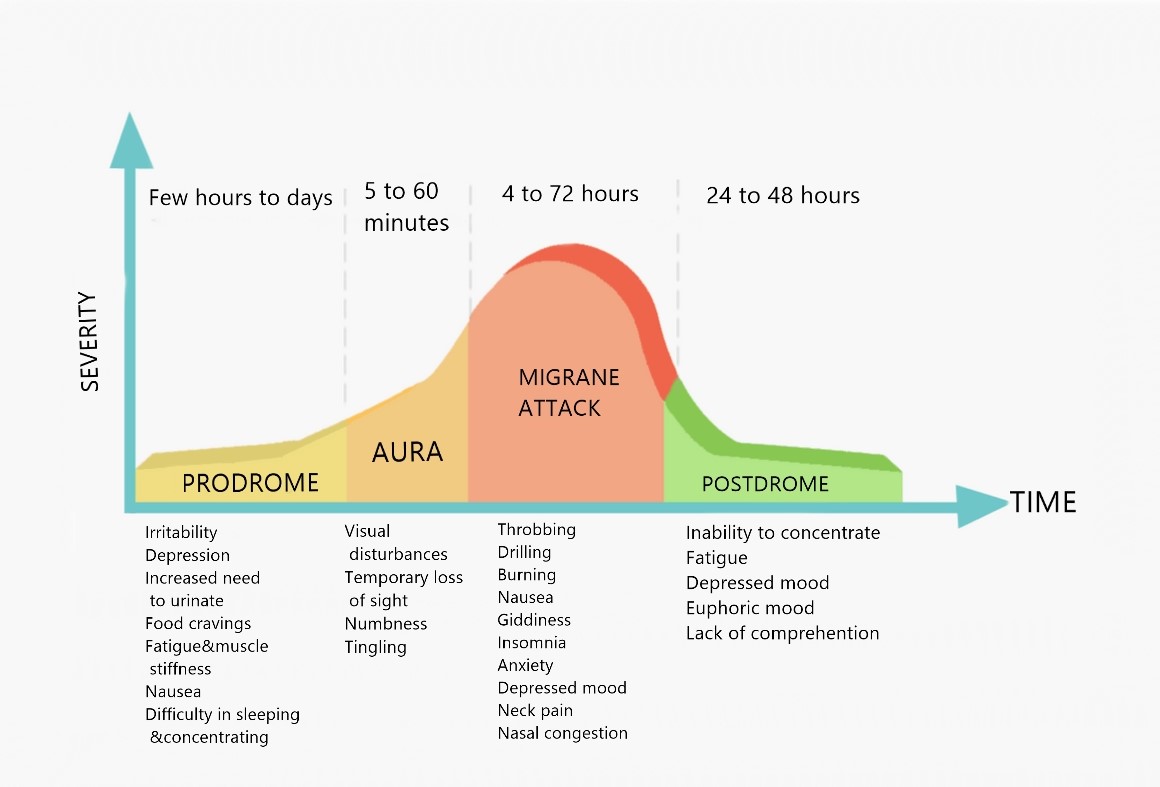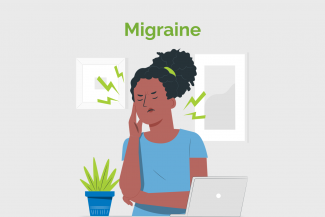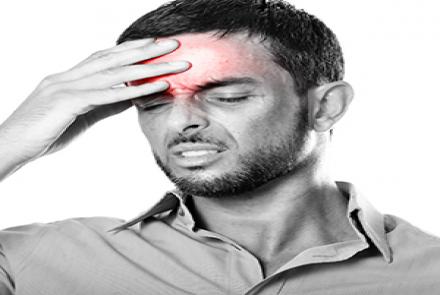
What is migraine
Migraine is a chronic type of headache that occurs in episodes and affects the day to day activities of an individual. It usually affects one side of the head. Between migraine episodes, the patient is absolutely free of pain. Migraine is the most common neurological condition in the developed world. A migraine attack can come with an aura, which means a sense of warning, or without an aura. Migraines are three times more common in women than men.
Migraine can affect anyone from children to the elderly. It progresses through four stages: Prodrome, aura, migraine attack, and postdrome. Individuals can experience any of the following stages:
-Prodrome – One or two days before migraine you might notice some symptoms such as body or neck stiffness, irritability, depression, frequent urination, nausea, food cravings, or difficulty in sleeping.
-Aura – It can be experienced before or during migraine. Visual disturbances, temporary loss of sight, numbness or tingling are experienced. It can last up to 60 minutes.
-Migraine attack – Throbbing, drilling, burning pain, nausea, anxiety, insomnia, neck pain or nasal congestion can be experienced. It can last up to 4 to 72 hours if untreated.
-Postdrome – Individuals may feel drained and confused for a day. Fatigue, difficulty in concentrating and mood swings can be experienced.

Read lived experiences of persons with Migraine here

















